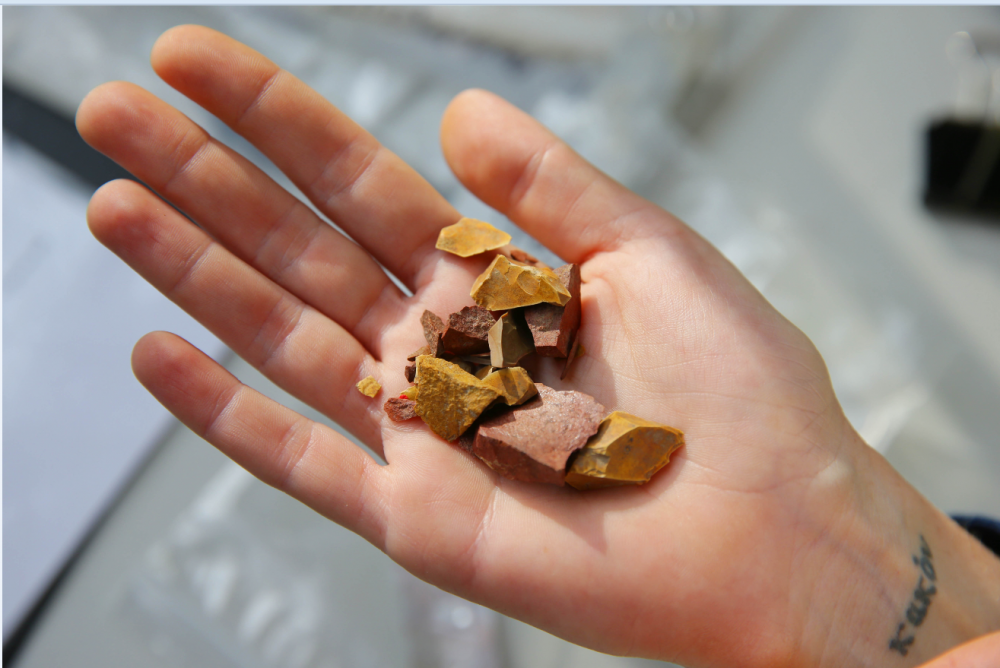Ancient Place, Ancient People
Traditional land of the Burramattagal
Always was, always will be
Parramatta is one of the earliest Aboriginal cultural heritage sites in Greater Sydney.
Parramatta River is central to the cultural story of Parramatta Park and its Aboriginal heritage. Its origins can be traced back to the last glacial period, some 120,000 years ago, when it was a smaller, freshwater creek.
Aboriginal people camped alongside this version of the river for thousands of years before the site became a British convict colony.
History revealed
Artefacts Aboriginal people left behind have been dated to between 35,000 and 39,000 years ago. Another Aboriginal campsite of similar age has also been discovered in Greater Parramatta. Archaeological sites of this age are very rare.

Aboriginal flaked stone artefacts made from imported red silcrete and mudstone left behind by Aboriginal people camping along the banks of Domain Creek in the Paddocks Precinct
The archaeological finds give us a snapshot of Aboriginal life in Parramatta during ancient times – though not a detailed picture. We know that the river wound through a sandstone valley to Sydney Harbour and Aboriginal people likely followed its curves and contours of spreading out along the way and settling across the wider Sydney Basin.
Archaeological records show how small, mobile groups of Aboriginal people made return visits to Parramatta, drawn to its fresh water and other natural resources. They bought stone tools and raw material supplies from the Hawkesbury‐Nepean and Grose Rivers. The raw materials they used were of high quality and the tools they made were reliable and carefully maintained – that’s why some artefacts survive today.
These travelling groups shaped the natural environment. They created long‐lasting campsites and built cooking/campfire pits with heat‐retaining stones, which they left in place for when they came back to camp again. They then started to use locally sourced, heat‐treated like silcrete for tools.
Transformed lands
Fast forward to around 18,000 years ago, when warming global temperatures over time caused sea levels to rise. The creek was flooded and the waterway, surrounding landscape and its habitats were transformed.
The changed conditions prompted the small groups of people to merge together with other groups, forming larger clans and language groups like the Darug who occupied most of the Cumberland Plain, which stretched west from Sydney’s coastline to the Blue Mountains.
Parramatta Park was part of the traditional lands of the Burramattagal people and remains so today.
Warami Mittigar Aboriginal Cultural Walk
Spend time on country with a traditional Aboriginal custodian, learning about connections to land, plant uses, tools, hunting and Aboriginal Parramatta.
Book today
